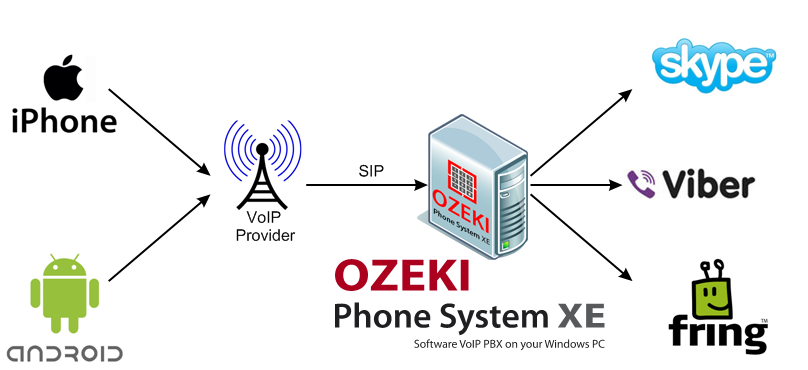Android vs Windows Mobile VoIP calls
Smartphones are one of the inventions in telephony of the 21st century, and sooner or later, every person will have one, because they are likely to replace communication via PSTN (Public Switched Telephone Network, the conventional way of communication), due to the recently become popular VoIP calls.
Android OS and Windows Mobile OS are both operation systems that make the smartphones work. As they have internet access, and they are Voice over Internet Protocol (VoIP, which controls voice transmission via the Internet) compatible, it is easy to make VoIP calls with them.
As you can see in Figure 1, the calling process is the same with both types: when you make a call, your VOIP provider gets the information, and transmits it on to a Private Branch eXchange (PBX deals with calls within the local network, and incoming-outgoing calls to and from that network) through SIP (Session Initiation Protocol is responsible for initiating, maintaining and terminating multimedia sessions via the Internet). The PBX then sends the call to the desired extension, using a voip application.

Needed:
-
To have:
- A smartphone with either Android OS or Windows Mobile OS.
- An application on the phone suited for voip calls.
- Account at a VoIP service provider.
-
To do:
- Installing the application you have downloaded.
- Fill in the required data, which your VoIP provider has given you.
- Make a VoIP call.
Most popular applications
-
Skype: supposedly the best at PC to PC calling (or rather Skype-to-Skype calling). If you call somebody without a Skype account, the voice and video get worse.
-
Viber: It is an application with very good sound quality, but you cannot call a person unless he or she also uses it.
-
Fring: It practically unifies the different applications available for smartphones.
Differences between Android and Windows Phones
The basic difference between these smartphones is their manufacturers: Android is used by various smartphone manufacturers, mostly because of its customizability, while Windows Mobile is made by Microsoft. So while Android OS has been made to be used by many different types of devices, Windows Phone OS is only used by a lot less manufacturers.
While Android has an entirely open-source platform, Windows Phone is mixed of closed and open-source, so it can slightly be customized, while Android is almost fully customizable. Due to its entirely open-source platform, however, Android is less secure, lots of programs in its App store are not to be trusted. The mixed open-source, however, gives you a more security on a Windows Phone.
Ozeki Phone System can provide you the same opportunities, but it is the only opportunity for you to have the best possible quality in your conversations, at all times regardless of the weather conditions, your geographical position, and the application or device that you use. The area of expertise of Ozeki Phone System is the next generation of telecommunication, so you can be absolutely sure you will always be satisfied with our services.
Check out the following articles for more information:
